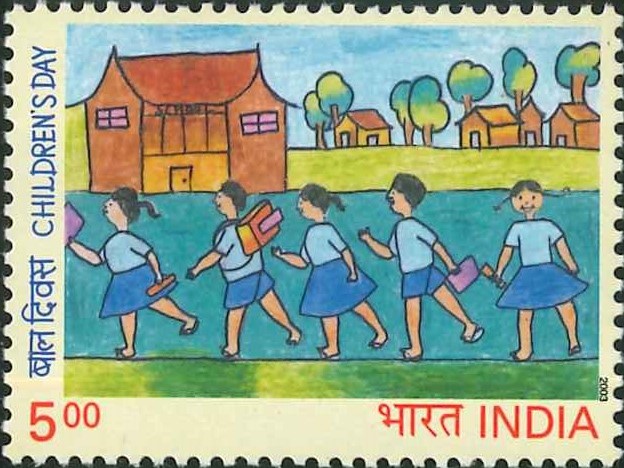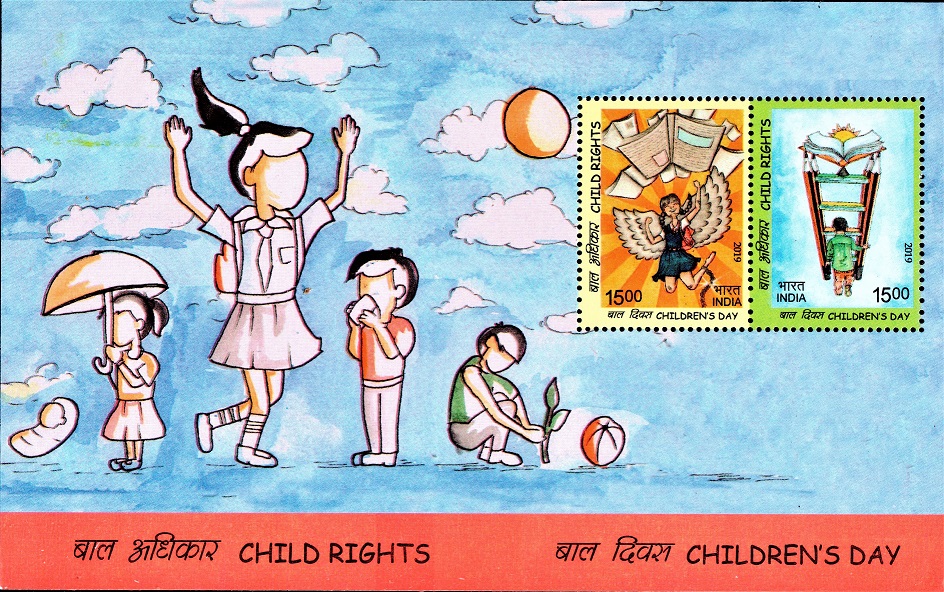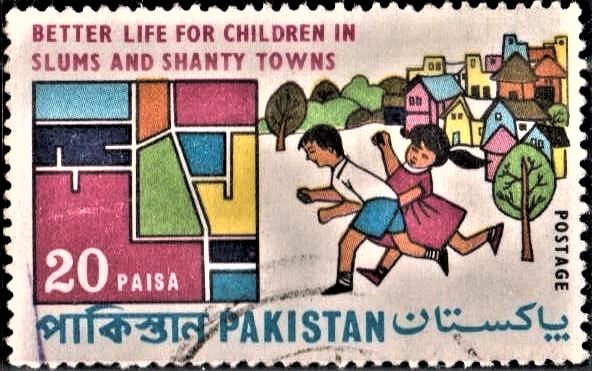
India on Children’s Day 2003
A postage stamp on the National Children’s Day 2003 :
 Issued by India
Issued by India
Issued on Nov 14, 2003
Issued for : The Department of Posts issues a special stamp every year to mark Children’s Day. This stamp is selected from designs made by children themselves in Stamp Design Competitions organised across the country. This activity elicits a tremendous response from the children who have portrayed a variety of significant themes like nutrition, shelter, children’s literature, empowerment of the girl child, etc. This year’s stamp designed by Prasen R. Modi takes children’s education as the theme and depicts children going to school. In this way, it draws the attention of the nation to the unrealised constitutional ideal embodied in Article 45 and also cajoles the children to go to school.
So, this Children’s Day, let us all unite to reaffirm our commitment to the achievement of complete literacy of children below fourteen so that the nation has a solid foundation and a scintillating future.
Credits :
Stamp : Prasen R. Modi
FDC : Shilpa Kankania
Sheetlet & Cancellation : Alka Sharma
Type : Stamp, Mint Condition
Colour : Four Colour
Denomination : 500 Paise
Overall size : 2.9 x 3.91 cms.
Printing size : 2.9 x 3.91 cms.
Perforation : 13.5 x 13.5
Paper : Matt Chromo
Print Quantity : 3 Million
Number of Stamps per sheetlet : 16
Printing Process : Photo Offset
Printer : Calcutta Security Printers Ltd.
About :
- Human motives are often classified pyramidically into five categories starting with the physiological needs and progressing through the safety, social and esteem needs to the highest-order motive viz. self-actualisation. Self-actualisation signifies the realisation of the true self. It may be epitomised in the musician’s rendition of a mellifluous crescendo or the painter’s landscape leading to sublime harmony within his being, the sage’s apocalyptic experience during meditation or the parents’ supreme ecstasy at the sight of their new-born baby! Indeed, the arrival of a child heralds an era of not only boundless joy and celebration in the life of parents but also places enormous responsibility on them and society at large to nurture the child into a fully functioning member of the social web. Children’s Day is an occasion that reminds society of this responsibility.
- Children’s Day is celebrated every year on November 14. The date is especially significant as it is also the birthday of Pandit Jawahar Lal Nehru, the First Prime Minister of our country. Pandit Nehru had a profound love for children who fondly called him ‘Chacha Nehru’. The occasion gives us an opportunity to reflect on the condition of the children in the country so that we can rededicate ourselves to their cause – the fulfilment of their basic needs and rights.
- Part IV of the Constitution spells out the Directive Principles of State Policy that embody the aims and objects of a ‘Welfare State’. Article 39 of the Directive enshrines that the state shall direct its policy towards securing that the tender age of children is not abused, that they are not forced by economic necessity to take up vocations unsuited to their age and strength and that childhood is protected against exploitation and moral and material abandonment. Similarly, Article 45 emphasises that the State shall endeavour to provide within a span of ten years from the commencement of the Constitution, free and compulsory education for all children until they complete the age of fourteen years. However, efforts towards achievement of these goals have not yet led to fruition. This year’s commemorative postage stamp highlights this cherished theme.
- Text : Amarpreet Duggal.







